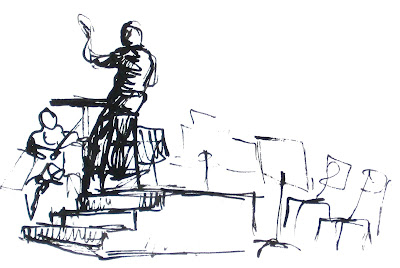There was a time when the top art buyers in the world were also its cultural leaders. Popes, emperors, kings, and the aristocracy were the patrons of the art world, its trendsetters, and its critics. At the top of the socio-economic ladder, they were also the most educated and sophisticated members of society. Their tastes ruled what was fashionable and their ideas decided what was good art. Art was once a symbol of culture and wealth. Buying art showed you had arrived or moved up the socio-econmic ladder. Consequently, people once bought art the way people buy new cars today. The Medici family in Florence is the classic example of education, wealth and culture combined in art buyers and patrons during the Renaissance.
Today the highest priced work of living artists looks like no one has ever looked at it on purpose. It's junk. It's impossible to imagine a connoisseur of stainless steel balloon animals. No education, culture, thought or sensitivity is necessary for the consumption of this art. It seems incomprehensible until you understand what's really going on. The fastest selling, highest priced art isn't bought by art lovers. It's bought by criminals and criminal organizations to launder money. The opacity of high level art sales is ideally suited for money laundering. Anyone can buy a million dollar painting in complete secrecy, no questions asked. The buyer plunks down the cash, and buys the art. There's no oversight, no safeguards. And apparently, that's what's going on.
The buyers of all that bazillion dollar art probably never even look at what they just bought, because it's all sold again almost immediately. Instead of the benevolent guiding influence of cultured art patrons like the Medici, what we've got instead are the Borgias, poisoning everything before we even get to the table.
What this means for actual, living artists is that you better hang on to your hat. None of this has anything to do with you or being an artist or making art. Just do it. Pay no attention to that man behind the curtain.
Deborah Dendler website
Deborah Dendler Facebook page
http://www.nytimes.com/2013/05/13/arts/design/art-proves-attractive-refuge-for-money-launderers.html?_r=0
http://www.widewalls.ch/the-art-world-money-laundering-february-2015/
http://mileswmathis.com/launder.pdf
http://www.hopesandfears.com/hopes/culture/art/214699-guide-to-laundering-money-art


